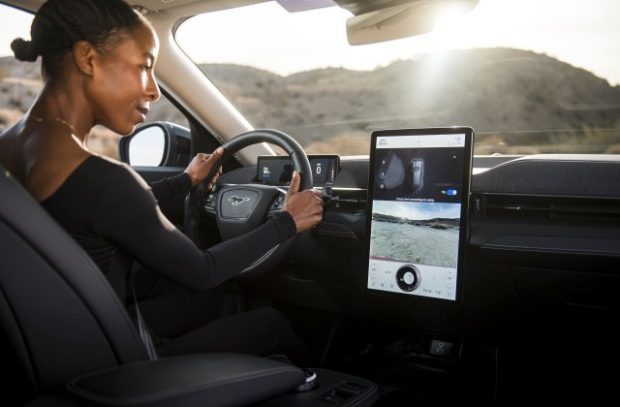When you buy a new car, you know they are safer today than decades past. But why is that? Review what makes cars safer today in the details below, and feel better as you get behind the wheel because cars have never been safer than right now.

The Steel
According to Popular Mechanics, electronic safety systems do contribute significantly to modern car safety. But much of the safety improvements are from steel.
Over the last decade, steel has improved in strength. One engineer at Honda estimates that the tensile strength of automotive steel has improved threefold since the early 2000s: 500 megapascals of tensile strength to 1,500.
At this strength, you can suspend 200,000 lbs on a strip of steel an inch wide and not tear the piece in two. This higher strength steel is created and stamped when hot and cooled fast. This allows for various shapes and variables of yield strength, which will dictate how the steel will deform in a crash.
Note that using high-strength steel isn’t intended to turn cars into ‘tanks.’ Instead, the idea is to reduce and control the energy in a crash and make everything lighter. Heavier doesn’t mean the car is safer. All heavy means is it’s heavy.
The cars in the 60s were heavy, but if you slammed into a brick wall, the car bounced off the wall, and all the deceleration forces ripped through the body. To reduce injuries in a crash, you don’t want a heavy, stiff vehicle.
More advanced steel and the use of strong, light aluminum and magnesium let vehicle engineers make structures that can reduce and dissipate car crash forces.
For instance, a new Cadillac uses ‘crush cans’ upfront aluminum to absorb energy before the crash forces affect the passengers. This Caddy’s seat belts unwind a bit during the wreck to reduce forces on the body.
The more vital metals and better crush zones can be seen in videos of modern cars being test crashed at 40 MPH. When a 2014 Acura slams into the wall at 40 MPH, the front part of the vehicle deforms until it hits the firewall. The crash forces slam into a wall of high-strength steel formed at 1600 F. Instead of collapsing, the car moves away from the crash barrier and absorbs the remaining crash energy.
From the front doors and forward, the car is destroyed. But the passenger compartment is intact.
Cars Are Made To Crash
Automakers use many types of steel and materials in the frames of their vehicles to redistribute and absorb the crash forces and keep the passenger compartment intact. For example, in a recent Volvo SUV, there were five grades of steel and several types of aluminum.
When Volvo uses soft metals on the outside and more robust steel in the SUV’s crush zone, the wave of energy in the crash can be mitigated away from the humans inside.
Air Bags
The NHTSA reports that airbags have made tremendous improvements in the last 20 years. Frontal airbags were put in cars in 1987 and have saved more than 50,000 people. Now auto manufacturers have advanced airbags on the sides and side curtains, and some rear compartments have airbags
Blindspot Detection
Because so many crashes happen when the driver didn’t see the vehicle next to them due to the blind spot, a blind spot detection system was created. This system uses sensors or cameras to check if a car is in the next lane. It will sound an alarm for the driver to tell them not to change lanes.
With the above safety improvements, you can see why the cars and SUVs you drive today are safer than ever.



